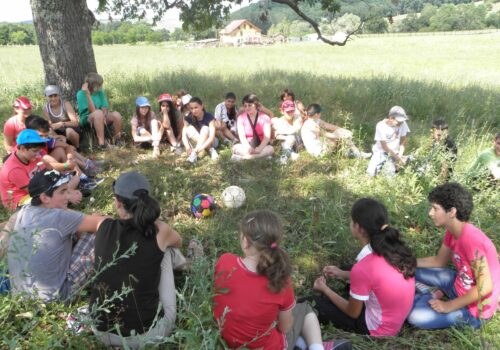
This small viper is among the most threatened vertebrates of Europe. The current distribution of
Vipera ursinii rakosiensis is very restricted, and outside Romania can only be found in Hungary, with only 11 populations. New data regarding the distribution of the Hungarian meadow viper is reported from Transylvania by Păun Georgiana and her colleagues. The distribution range of the subspecies in Transylvania was extended by the discovery of a southernmost population, identified using ecological niche modeling techniques and subsequent field inventory of suitable habitats, predicted by the model.

The meadow viper (
Vipera ursinii) is represented in Romania by two lowland subspecies:
Vipera ursinii rakosiensis, known also as the Hungarian meadow viper, with its presence limited to the Transylvanian Plateau, and
Vipera ursinii moldavica, present in the surroundings of Iasi and the Danube Delta. Until now, the Hungarian meadow viper was reported in Transylvania from only four locations, therefore the newly identified population is more than welcome.

Although this discovery brings exciting news, we can not ignore the fact that the already isolated natural habitats, utilized by this species, are experiencing a great anthropogenic pressure. Due to the intensification of agricultural techniques, habitat loss and degradation are by far the greatest threats faced by the species. Natural habitats are being progressively converted into arable fields and the remaining grasslands are degraded by overgrazing. The protected natural areas, recently designated for this subspecies, as part of Natura 2000 Network, are experiencing similar anthropogenic pressure, despite their full legal protection. Moreover, Romania has reported to the European Union, for the 2007-2012 period, a favorable conservation status of
Vipera ursinii rakosiensis, despite the small size of (estimated to be 100-300 individuals) the population!
This study was supported by a scholarship provided by Milvus Group, in parallel with a grant from the European Herpetological Society (SEH). Congratulations!

 This small viper is among the most threatened vertebrates of Europe. The current distribution of Vipera ursinii rakosiensis is very restricted, and outside Romania can only be found in Hungary, with only 11 populations. New data regarding the distribution of the Hungarian meadow viper is reported from Transylvania by Păun Georgiana and her colleagues. The distribution range of the subspecies in Transylvania was extended by the discovery of a southernmost population, identified using ecological niche modeling techniques and subsequent field inventory of suitable habitats, predicted by the model.
This small viper is among the most threatened vertebrates of Europe. The current distribution of Vipera ursinii rakosiensis is very restricted, and outside Romania can only be found in Hungary, with only 11 populations. New data regarding the distribution of the Hungarian meadow viper is reported from Transylvania by Păun Georgiana and her colleagues. The distribution range of the subspecies in Transylvania was extended by the discovery of a southernmost population, identified using ecological niche modeling techniques and subsequent field inventory of suitable habitats, predicted by the model.
 The meadow viper (Vipera ursinii) is represented in Romania by two lowland subspecies: Vipera ursinii rakosiensis, known also as the Hungarian meadow viper, with its presence limited to the Transylvanian Plateau, and Vipera ursinii moldavica, present in the surroundings of Iasi and the Danube Delta. Until now, the Hungarian meadow viper was reported in Transylvania from only four locations, therefore the newly identified population is more than welcome.
The meadow viper (Vipera ursinii) is represented in Romania by two lowland subspecies: Vipera ursinii rakosiensis, known also as the Hungarian meadow viper, with its presence limited to the Transylvanian Plateau, and Vipera ursinii moldavica, present in the surroundings of Iasi and the Danube Delta. Until now, the Hungarian meadow viper was reported in Transylvania from only four locations, therefore the newly identified population is more than welcome.
 Although this discovery brings exciting news, we can not ignore the fact that the already isolated natural habitats, utilized by this species, are experiencing a great anthropogenic pressure. Due to the intensification of agricultural techniques, habitat loss and degradation are by far the greatest threats faced by the species. Natural habitats are being progressively converted into arable fields and the remaining grasslands are degraded by overgrazing. The protected natural areas, recently designated for this subspecies, as part of Natura 2000 Network, are experiencing similar anthropogenic pressure, despite their full legal protection. Moreover, Romania has reported to the European Union, for the 2007-2012 period, a favorable conservation status of Vipera ursinii rakosiensis, despite the small size of (estimated to be 100-300 individuals) the population!
This study was supported by a scholarship provided by Milvus Group, in parallel with a grant from the European Herpetological Society (SEH). Congratulations!
Although this discovery brings exciting news, we can not ignore the fact that the already isolated natural habitats, utilized by this species, are experiencing a great anthropogenic pressure. Due to the intensification of agricultural techniques, habitat loss and degradation are by far the greatest threats faced by the species. Natural habitats are being progressively converted into arable fields and the remaining grasslands are degraded by overgrazing. The protected natural areas, recently designated for this subspecies, as part of Natura 2000 Network, are experiencing similar anthropogenic pressure, despite their full legal protection. Moreover, Romania has reported to the European Union, for the 2007-2012 period, a favorable conservation status of Vipera ursinii rakosiensis, despite the small size of (estimated to be 100-300 individuals) the population!
This study was supported by a scholarship provided by Milvus Group, in parallel with a grant from the European Herpetological Society (SEH). Congratulations!
































